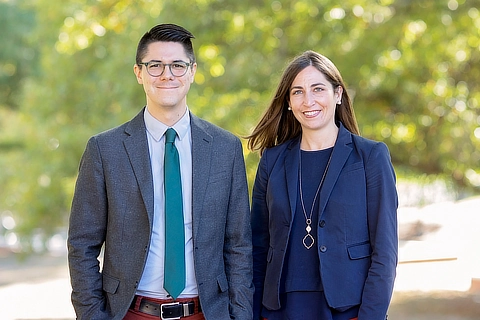
The Office of Diversity and Intercultural Initiatives annually allocates a designated amount of funds to support Samford’s goal of creating a more inclusive and diverse campus community. In congruence with Samford’s vision, the office also seeks to promote a diverse community, stressing vigorous learning and personal faith, in the Baptist tradition.
Julianne Sandberg and Taylor Cyr, both assistant professors in Howard College of Arts and Sciences, applied for a diversity development grant to see that vision accomplished.
“Samford strives to be a place where all students are valued and where they find community among their peers and support from their professors. And in many ways Samford achieves this goal,” said Sandberg. “But we also know that not all of our students experience the same degree of belonging, nor do they receive equitable levels of support.”
Their method was to form a faculty reading group on anti-racist teaching where they would come together to read, learn and discuss pressing matters that face every college campus. Fifteen faculty members across seven departments in the college came together to read How to be an Antiracist, Teaching to Transgress and selected chapters from Performing Antiracist Pedagogy, meeting to discuss throughout the year.
“Our explicit goals for the Faculty Reading Group included learning from the expertise of teachers and scholars of historically oppressed or disadvantaged groups, and identifying conceptual resources and concrete practices that could be integrated into our classrooms at Samford. We also hoped, and continue to hope, that the Faculty Reading Group might spur on more conversations about promoting equity in our classrooms,” said Cyr.
Sandberg and Cyr believe their work speaks directly to the heart of Samford’s unique mission, vision and values. “Through this work, we hope our students are equipped to thrive and connect. Positioned as a leader in Christian higher education, Samford can be an example of how predominantly white institutions can be mindful and proactive in shaping their campus communities and cultivating belonging in the classroom,” said Sandberg.
Sandberg and Cyr were later invited by the Office of Diversity and Intercultural Initiatives to give a presentation on their work. Students, faculty and staff all came together to discuss the significance of keeping the classroom an equitable community.
“This work has made me mindful of how to cultivate inclusion and belonging in the classroom so that our students learn and grow together as members of a unified community who value one another’s presence and listen to one another’s voices,” said Sandberg.
